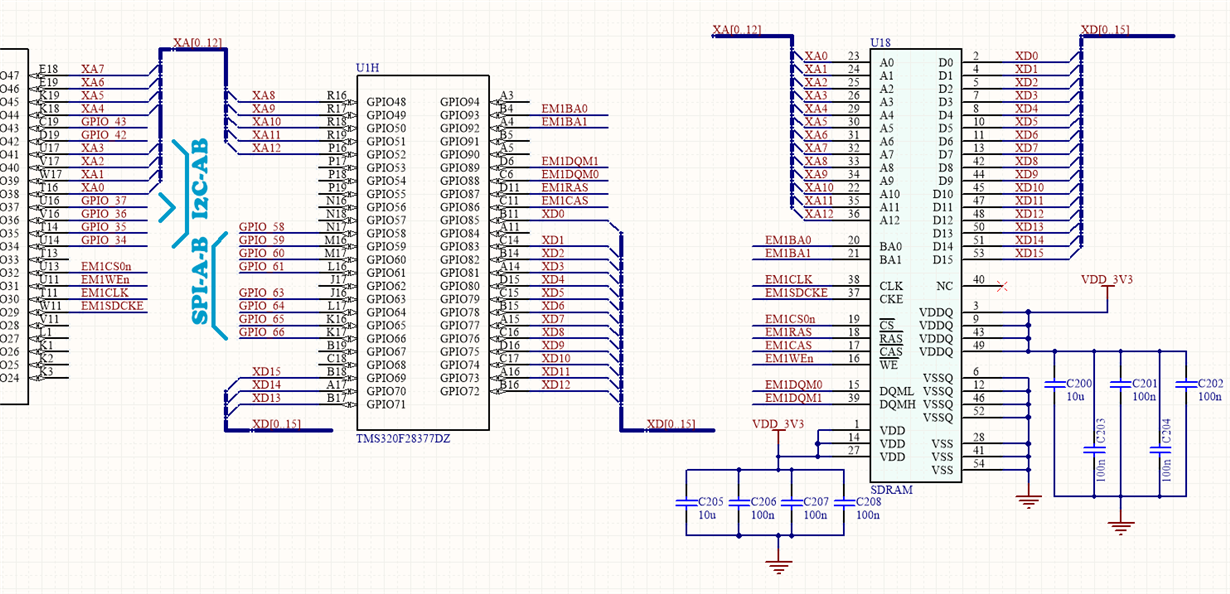Hi,
I want to use the F28377 EMIF to control the SDRAM.
Now I want to make sure the whether the hardware configuration is correct.
1.SDRAM selection
I choose the SDRAM with parameters below as reference.
Type: SDRAM
Data bus width: 16 bit
Supply voltage:3.3V
Organizition: 4/8/16/32M * 16 (I think these are compatible and can be replaced depend on the capacity demand. Is that right? )
But I don't know how to deal with the Maximum Clock Frequency and Access Time.
The Sysclk of F28377D is 200MHz and does it means I must use the SDRAM maximum clock frequency at 200MHz?
And how to choose the SDRAM depend on the Access Time?
I select the SDRAM from MOUSER.

2.Hardware connection
Take the IS42S16320D-7TLI as a example.
I want to know whether the hardware connection is correct.
IO settings:
GPIO 38-41,44-52 as the 13 bit address line;
GPIO 69-83,85 as the 16 bit data line;
GPIO 29 30 31 32 as EMIF SDCKE CLK WE CS0;
GPIO 86 87 AS CAS RAS;
GPIO 88 89 as DQM0 DQM1(DQM0 for DQML x16 Lower Byte, Input/Output Mask, DQM1 for DQMH x16 Upper Byte, Input/Output Mask)
GPIO 92 93 as BA0 BA1;
Is there some examples from TI that show the hardware settings for EMIF to SDRAM?
Looking forward to your reply!
Best regards,
Di



